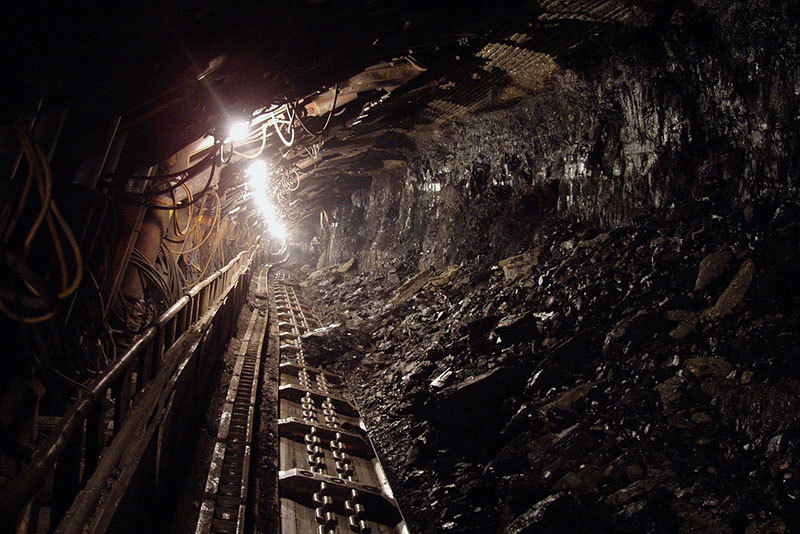I. Purposes of Coal Seam Water Injection Technology
Dust Prevention: Moisten the coal body to reduce the generation and dispersion of coal dust during mining, improve the working face environment, and protect the health of miners.
Outburst/Surge Prevention: For coal seams with the risk of outbursts or rock bursts, water injection can change the physical and mechanical properties of the coal body (reduce strength, increase plasticity, release stress), reduce the rate and pressure of gas desorption, and thus reduce the risk of outbursts or surges.
Coal Body Softening: Reduce the hardness and strength of the coal body, making it easier for mining machinery to cut, improving efficiency, and reducing cutter wear.
Coal Body Moistening: Increase the moisture content of the coal body, which helps to reduce the tendency of spontaneous combustion in the coal seam.
Pre-extraction of Gas: The water injection process can drive gas migration, and in conjunction with the extraction system, it can improve gas extraction efficiency (water injection gas driving effect).
II. Core Role of High-Pressure Pumps
In coal seam water injection, the high-pressure pump is responsible for Increasing the pressure of normal pressure water to the required high pressure to overcome the following resistance:
Pipeline Frictional Resistance: Friction loss of water flowing in long-distance pipelines.
Local Resistance: Losses caused by valves, bends, and changes in diameter.
Borehole Frictional Resistance: Losses of water flowing in boreholes.
Coal Body Pore Resistance: The most critical and largest resistance! Water needs to overcome the capillary force of the coal body micropores, the adsorption force of the fracture surface, and the permeability resistance of the coal body itself in order to effectively inject and moisten the coal body.
III. Types and Selection of High-Pressure Pumps
High-Pressure Reciprocating Plunger Pump:
Working Principle: The plunger reciprocates in the pump cylinder driven by a crankshaft connecting rod mechanism, changing the pump cavity volume, and cooperating with the suction valve and discharge valve to achieve water suction and high-pressure water discharge. It is usually a three-plunger or multi-plunger structure to obtain a more stable flow rate.
Advantages:
High Pressure: It is the main pump type for coal seam water injection, with a wide pressure range, especially suitable for low-permeability coal seams.
High Efficiency: High volumetric efficiency, especially at high pressures, performs better than centrifugal pumps.
Adjustable Flow Rate: The flow rate can be easily adjusted by adjusting the plunger stroke or drive speed (frequency conversion).
High-Pressure Resistance: Robust structure, capable of withstanding high-pressure operation for extended periods.
Maximum Operating Pressure (MPa): The most critical parameter! Must be greater than the maximum pressure required to overcome all resistances (especially the permeability resistance of the target coal body). It needs to be determined based on factors such as coal seam permeability, water injection radius, and sealing depth, usually obtained through experiments or empirical data.
Rated Flow Rate (L/min, m³/h): Determined according to the single-hole water injection speed, the number of simultaneously injected holes, and the water injection cycle requirements. If the flow rate is too small, the water injection cycle will be too long; if the flow rate is too large, it may cause pressure fluctuations or pipeline vibrations, and may exceed the coal body absorption capacity, leading to ineffective loss.
Power (kW): Calculated from the required pressure and flow rate, it needs to be matched with a motor or diesel engine drive.
Efficiency (%): Affects energy consumption and operating costs; plunger pumps usually have better efficiency than centrifugal pumps at high pressures.
Medium Requirements: The material and seals of the pump must be suitable for the mine water quality (pH value, hardness, solid content, corrosive ions, etc.).
Reliability and Maintainability: The underground environment is harsh, requiring the pump to have a robust structure, easy-to-replace wear parts, and long maintenance cycles.
Explosion-Proof Requirements: In gas mines, motors and electrical equipment that meet the mine explosion-proof standards must be selected.
Size and Weight: Consideration should be given to the limitations of underground transportation and installation space.
IV. Key Supporting Components of the High-Pressure Pump System
Water Source and Pre-treatment System:
Water Tank/Pool: Storage and sedimentation.
Filter: Crucial! Multi-stage filtration (such as sand filtration, bag filtration, precision filter cartridges) ensures that the water entering the pump is clean and protects the pump's valve group and seals. The filtration accuracy needs to be determined according to the pump's requirements (often ≤50μm, or even ≤10μm is required).
Softening/Descaling Device (Optional): For high-hardness water, preventing scaling in pipelines and pumps.
High-Pressure Pipeline System:
Main Pipeline: From the pump station to the mining area/working face, using High-pressure seamless steel pipe or High-pressure steel wire wound/braided hose The pressure rating must be much higher than the maximum operating pressure of the pump.
Branch pipe/water injection pipe: Connected to the borehole, commonly used High-pressure hose It is required to be flexible, wear-resistant, and high-pressure resistant.
High-pressure valves: Stop valves, ball valves, check valves, safety valves, pressure relief valves, pressure gauge valves, etc. Reliable sealing, flexible operation, and high-pressure resistance are required.
Pressure gauge/sensor: Real-time monitoring of the pressure at the pump outlet, the end of the main pipe, and the borehole It is the core basis for judging the water injection status. Products with appropriate range, reliable accuracy, and shock resistance should be selected.
Flow meter (optional but recommended): Monitor water injection flow rate, evaluate water injection efficiency and coal body absorption.
Control system:
Start/stop control: Manual or automatic.
Pressure regulation and protection: Control pressure by variable frequency speed regulation (plunger pump/centrifugal pump), bypass overflow valve (common in plunger pump) or adjusting valve opening (centrifugal pump). Must be equipped with Safety valve Automatically relieve pressure when the pressure exceeds the set limit to protect system safety.
Overload/phase failure/leakage protection:
Data acquisition and recording (optional): Record parameters such as pressure, flow rate, and operating time for analysis and optimization.
Borehole sealing device: Ensure that high-pressure water is effectively injected into the coal seam instead of leaking from the borehole wall. Commonly used Bag-type packer or Cement mortar sealing The sealing section length must be sufficient, the seal must be tight, and it must be able to withstand the action of high-pressure water. The sealing quality is one of the key factors determining the success or failure of water injection.
V. Operating points and precautions for high-pressure pumps in coal seam water injection
Before starting the pump:
Check that all connections are tightened and there is no looseness.
Check the oil level in the oil tank (lubricating oil pump) or lubrication points (plunger pump).
Check the rotation for flexibility.
Open the inlet valve to ensure that the pump cavity is full of water and air is removed.
Check that the filter system is clean and unobstructed.
Check that the pressure gauge and safety valve are functioning normally.
Open the return valve or unloading valve (if any).
Pump start-up and operation:
Start the motor/diesel engine according to the regulations.
Slowly close the return valve/unloading valve to gradually increase the pressure to the set value.
Closely monitor the pump outlet pressure, current, temperature, sound, vibration, and leakage.
Adjust the pressure to the target water injection pressure range.
Record operating parameters (pressure, flow rate, time).
Water injection process monitoring:
The core is to monitor the borehole pressure:
Stable or slowly rising pressure: Normal water injection, water is penetrating into the deeper part of the coal body.
Continuous rapid pressure rise: May be close to coal body fracture pressure or seal failure, pipe blockage. Caution is needed to prevent overpressure.
Pressure drop: Possible coal body fissure development, communication with adjacent boreholes or space, seal failure. Check the cause.
Observe whether the coal wall around the borehole is seeping water (wetting effect).
Note any unusual sounds (such as pipe vibration, leakage sound).
Stop pump:
Slowly open the return valve/unloading valve to reduce system pressure.
Stop the motor/diesel engine.
Close the inlet valve.
If the pump is stopped for a long time, the accumulated water in the pump and pipeline should be drained (especially in cold areas).
Maintenance:
Regularly change lubricating oil/grease.
Regularly check and replace wearing parts: Plunger seals, valve groups (valve seats, valve cores, springs), and filter elements are the key points.
Regularly check fasteners, pipelines, and joints.
Regularly calibrate pressure gauges and safety valves.
Keep the equipment clean, especially the cooling system.
Keep good operating records and maintenance records.
Summary
The high-pressure pump is the "heart" of coal seam water injection technology, and every aspect of its selection, installation, operation, and maintenance is crucial. Selecting the appropriate pump type (primarily plunger pumps), ensuring good water quality (strict filtration), designing reliable high-pressure pipelines, employing effective grouting technology, performing careful operation and monitoring, and implementing strict maintenance are key to ensuring that coal seam water injection achieves its expected effects (dust suppression, outburst prevention, coal body softening) and ensuring the safe and stable operation of the system. With technological advancements, high-pressure pump systems are developing towards greater intelligence, efficiency, and reliability.
The 17th China International Powder Metallurgy and Hard Alloy Exhibition
The 2025 17th China International Powder Metallurgy and Hard Alloy Exhibition from March 10-12, 2025, at the Shanghai World Expo Exhibition and Convention Center, Hall H1, B425. We welcome guests to visit.
"Private custom" product design, reliable and durable finished products
"Private custom" like product design, reliable and durable finished products, professional and timely after-sales service. It is the "three basic concepts" that the company adheres to from the beginning until today ".
Experienced market research team, independent product development concept
We have experienced mature market research team, independent product research and development concept, professional design and manufacturing technology so that the company's products can be adjusted according to the specific requirements of customers timely design
Copyright©Shuangyao (Tianjin) Fluid Power Equipment Co., Ltd.







